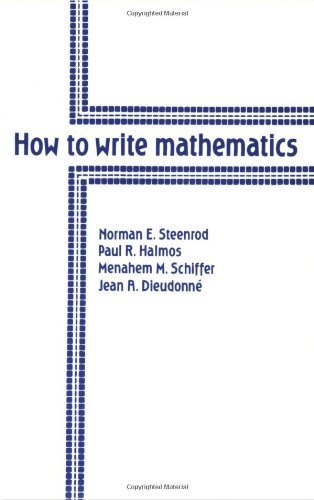What do you think?
Rate this book


Paperback
First published December 1, 1973
The basic problem in writing mathematics is the same as in writing biology, writing a novel, or writing directions for assembling a harpsichord: the problem is to communicate an idea. To do so, and to do it clearly, you must have something to say, and you must have someone to say it to, you must organize what you want to say, and you must arrange it in the order you want it said in, you must write it, rewrite it, and re-rewrite it several times, and you must be willing to think hard about and work hard on mechanical details such as diction, notation, and punctuation. That's all there is to it.
(From the essay by P. R. Halmos)